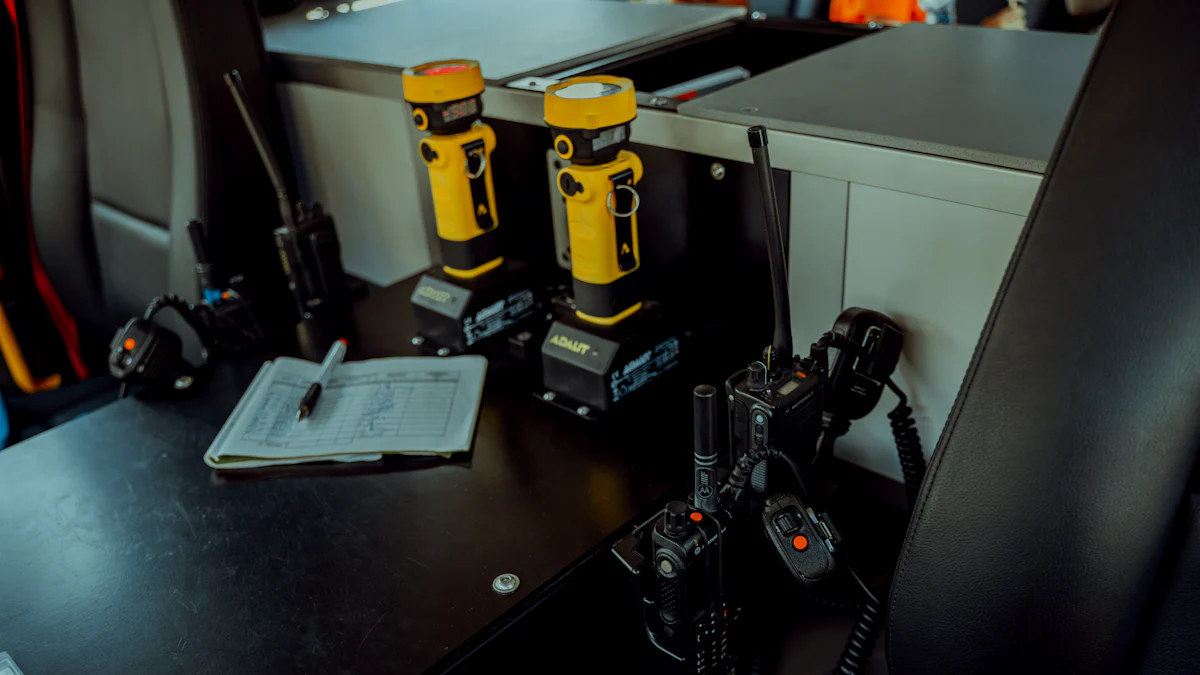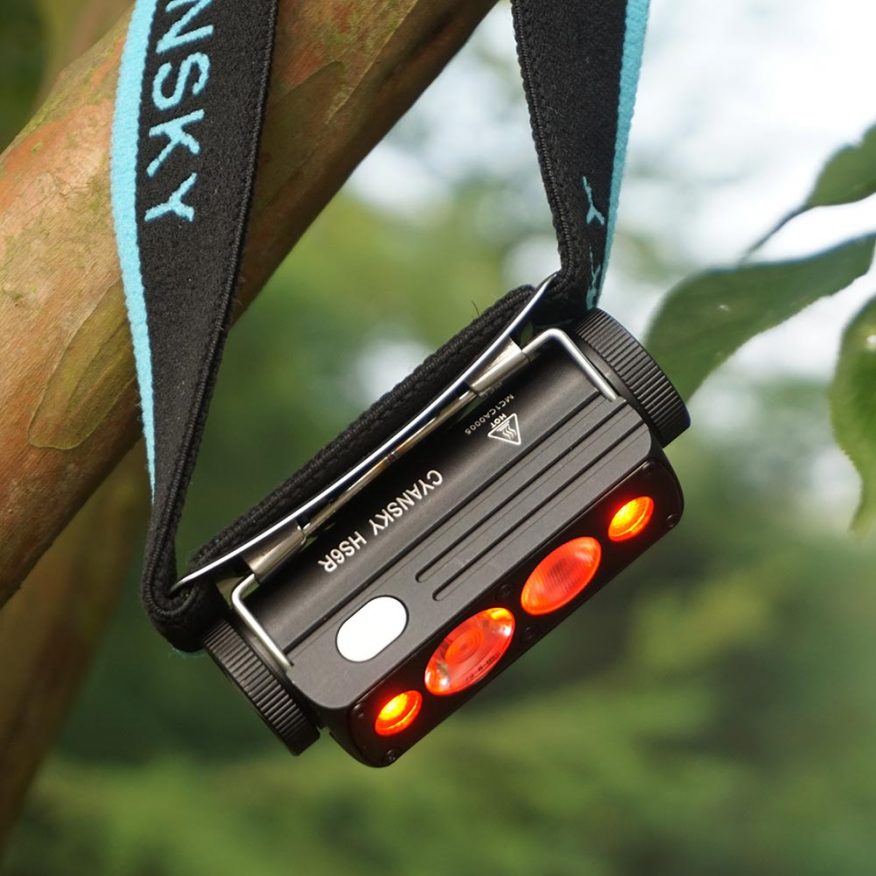Key Features of a Reliable Emergency Headlamp

Imagine being stuck in the dark during an emergency. A reliable headlamp can be your lifeline, lighting the way when you need it most. The best headlamp doesn’t just offer brightness; it ensures safety and peace of mind. With the right features, it becomes an essential tool for any unexpected situation.
Key Takeaways
Pick a headlamp with brightness you can adjust. It should have at least 200 lumens for general use. This helps in many emergency situations.
Get a headlamp with long-lasting batteries and good power options. Rechargeable lithium-ion batteries are a great choice. This makes sure your light works when needed.
Choose a headlamp that can handle bad weather and is strong. An IPX4 rating protects it from rain. Strong materials help it survive tough conditions.
Essential Features of the Best Headlamp for Emergencies
Brightness Levels and Beam Distance
When choosing the best headlamp for emergencies, brightness is one of the most critical factors. You want a headlamp that offers adjustable brightness levels to suit different situations. For example, a lower setting works well for close-up tasks, while a higher setting is perfect for spotting objects at a distance. Look for a headlamp with at least 200 lumens for general use, but if you need something more powerful, models with 500 lumens or more can illuminate vast areas.
Beam distance is equally important. A longer beam helps you see farther, which is essential when navigating dark trails or signaling for help. Some headlamps offer a focused beam for long-range visibility, while others provide a wide beam for broader coverage. The best headlamp combines both options, giving you flexibility in emergencies.
Battery Life and Power Options
Battery life can make or break a headlamp during an emergency. You don’t want your light to die when you need it most. Look for a headlamp with long-lasting battery life, ideally one that can run for several hours on a single charge.
Reliable power options are also key. Many headlamps now use lithium-ion batteries, which are rechargeable via USB and hold their charge well over time. Nickel-metal hydride (NiMH) batteries are another great choice, thanks to their high energy capacity and slow self-discharge rate. Some headlamps even offer hybrid power options, letting you switch between rechargeable and disposable batteries for added convenience.
Weather Resistance and Durability
Emergencies don’t wait for perfect weather, so your headlamp needs to handle tough conditions. Weather resistance is a must. Look for models with water resistance ratings like IPX4 or higher, which protect against rain and splashes.
Durability is just as important. A sturdy headlamp can withstand drops, bumps, and rough handling. High-quality materials like impact-resistant plastic or aluminum ensure your headlamp lasts through multiple emergencies. When you combine weather resistance and durability, you get a headlamp that’s ready for anything.
Practical Design for Comfort and Usability
Adjustable Straps and Comfortable Fit
A headlamp should feel like it’s barely there, even during extended use. That’s why adjustable straps are so important. They let you customize the fit to match your head size or even fit snugly over a helmet. A secure fit ensures the headlamp stays in place, no matter how much you move.
Comfort matters too. Look for straps made from soft, breathable materials. These reduce irritation and prevent discomfort, especially during long emergencies. Some headlamps even come with padding on the inside of the strap for extra comfort. When your headlamp fits well, you can focus on the task at hand without distractions.
Lightweight and Compact Design
Nobody wants to carry extra weight during an emergency. A lightweight headlamp makes all the difference. It reduces strain on your head and neck, letting you wear it for hours without feeling fatigued. Compact designs are also easier to pack in your emergency kit or pocket.
Despite being small, the best headlamp doesn’t compromise on performance. Many lightweight models still deliver impressive brightness and hands-free illumination. This balance of portability and power is what makes a headlamp truly practical.
Easy-to-Use Controls
In an emergency, you don’t have time to fumble with complicated buttons. A headlamp with simple, intuitive controls is a must. Look for models with large buttons or switches that you can operate even while wearing gloves.
Some headlamps also feature a single-button design, making it easy to switch between modes. Whether you need to adjust brightness or activate a special mode, quick and easy controls save precious time.
Advanced Features for Emergency Situations
Red Light Mode for Night Vision
Sometimes, you need a headlamp that doesn’t ruin your night vision. That’s where the red light mode comes in. This feature is perfect for emergencies when you want to preserve your ability to see in the dark. Red light is less harsh on your eyes and doesn’t attract insects like white light does. It’s especially useful for tasks like reading maps, checking equipment, or moving quietly without disturbing others.
Many headlamps include red light as one of their light modes. Switching to it is usually quick and easy, so you can adapt to your surroundings in seconds. If you’re preparing for emergencies, make sure your headlamp has this handy feature.
Strobe or SOS Mode for Signaling
In a crisis, signaling for help can save your life. A strobe or SOS mode is a must-have in any emergency headlamp. These light modes flash in a pattern that’s easy to spot from a distance, even in poor visibility.
The strobe mode works well for grabbing attention, while the SOS mode flashes the universal distress signal. Whether you’re lost in the wilderness or stuck on the side of the road, these features make it easier for rescuers to find you. Look for a headlamp with dedicated buttons or simple controls to activate these modes quickly.
Rechargeable vs. Disposable Batteries
Choosing between rechargeable and disposable batteries can feel tricky. Each has its pros and cons, so it depends on your needs. Here’s a quick comparison to help you decide:
Type of Battery | Advantages | Disadvantages |
|---|---|---|
Rechargeable Batteries | - Lower long-term costs due to rechargeability. | - Higher initial cost, amortized over time. |
- Suitable for devices with high power consumption. | - Dependent on an external power source. | |
- Longer service life and better environmental footprint. | - Additional costs for accessories like a charger. | |
- Self-discharge more quickly. | ||
Non-rechargeable Batteries | - Insensitive to heat and cold. | - Cannot be recharged. |
- Long storage life with low self-discharge rate. | - More expensive in the long term. | |
- Available in small designs with high energy density. | - Energy required for production exceeds output by a hundredfold. |
Rechargeable batteries are great for frequent use. They keep the brightness of your headlamp steady throughout their charge. However, they can self-discharge if left unused for too long. Disposable batteries, on the other hand, are better for long-term storage. They’re reliable in extreme temperatures and don’t lose power as quickly.
For emergencies, a hybrid headlamp that supports both battery types gives you the best of both worlds. You’ll always have a backup option when you need it most.
Additional Considerations for Reliability
Regulated Output for Consistent Brightness
Have you ever noticed how some headlamps dim as the battery drains? That’s where regulated output comes in. A headlamp with this feature uses an electronic regulation system to keep the brightness steady for a specific period. This means the light source won’t fade unexpectedly, giving you consistent illumination when you need it most.
Once the battery gets low, these headlamps often switch to a reserve lighting mode. This extends the run time and ensures you’re not left in complete darkness. Whether you’re navigating a trail or working on a task, regulated output guarantees reliable performance throughout its usable burn time.
Tilt or Pivot Functionality
A headlamp that can tilt or pivot adds a whole new level of convenience. Imagine needing to focus the light source on a specific spot without moving your head awkwardly. With this feature, you can adjust the angle of the beam to suit your needs.
This functionality is especially useful for tasks like repairing equipment, reading maps, or cooking during emergencies. It also helps reduce strain on your neck since you don’t have to hold uncomfortable positions to get the light where you want it. A headlamp with a durable pivot mechanism ensures it stays functional even after repeated adjustments.
Long Runtime Between Charges
When you’re in an emergency, the last thing you want is a headlamp that dies too quickly. A long run time is essential for reliability. Look for models that can last several hours on a single charge, even at higher brightness settings.
Some headlamps offer energy-efficient modes that extend the battery life without compromising the light source’s effectiveness. This ensures you have dependable illumination for extended periods. A headlamp with a long run time gives you peace of mind, knowing it’ll last through the night or until help arrives.
Choosing the right emergency headlamp can make all the difference when it matters most. Focus on key features like long battery life, durable construction, and user-friendly controls. Look for options with multiple beam modes, a lockout function to prevent accidental activation, and adjustable tilt for better visibility.
🛠️ Pro Tip: A headlamp with red light mode and strobe signaling ensures you're prepared for any situation.

Your needs might vary, but a reliable headlamp should always combine practicality with performance. Take your time, weigh your options, and pick one that keeps you safe and ready for the unexpected.
FAQ
How do I know if a headlamp is bright enough for emergencies?
Check the lumens rating. For emergencies, aim for at least 200 lumens. Higher lumens (500+) work better for outdoor or long-distance visibility.
Can I use my headlamp in heavy rain?
Yes, if it’s water-resistant. Look for an IPX4 rating or higher. This ensures your headlamp can handle rain and splashes without damage.
What’s the best way to store a headlamp for emergencies?
Store it with fresh batteries or a full charge. Keep it in a dry, accessible place, like your emergency kit, to ensure it’s ready when needed.
See Also
Selecting The Perfect Headlamp Flashlight For Your Needs
Designed For Longevity: Our Emergency Flashlight's Durability
Advantages Of Utilizing A Red Light Headlamp
Must-Have Gear: Functional Headlamps For Hands-Free Lighting
